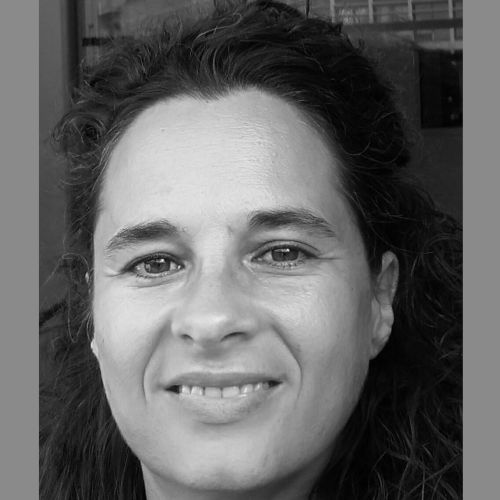A new boost for contemporary art
- Culture Folder
- Trends
- Jan 22
- 11 mins
The circuit of public amenities dedicated to promoting the visual arts in Barcelona has widened and has been given renewed impetus with generational changes in their management. Santa Mònica, Fabra i Coats: Centre d’Art Contemporani de Barcelona, La Virreina Centre de la Imatge and La Capella share an idea of art as an arena for critical debate on reality. Their directors give us their views on the topic.
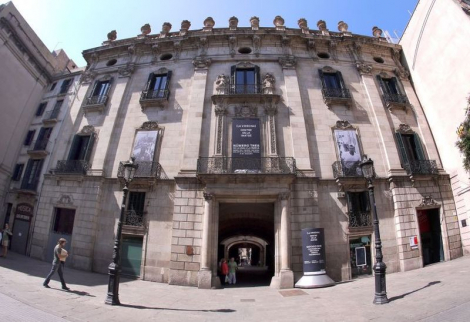 La Virreina Centre de la Imatge © Vicente Zambrano González
La Virreina Centre de la Imatge © Vicente Zambrano GonzálezBarcelona’s vibrant art scene is experiencing a time of new opportunities. The circuit of public amenities dedicated to promoting art has widened and has been given renewed impetus with generational changes in management. Santa Mònica, under the auspices of the Government of Catalonia’s Department of Culture, and Fabra i Coats: Centre d’Art Contemporani de Barcelona [Fabra i Coats: Barcelona Contemporary Art Centre], La Virreina Centre de la Imatge [La Virreina Image Centre] and La Capella, all three municipal art venues, share many things: an idea of art as an arena for critical debate on reality and as a tool for social transformation and approaches to dealing with a plural and complex scene that has been neglected for many years.
The road to get here has been rough. The dismantling of Santa Mònica in 2007, on the brink of the global financial crisis, left Catalonia’s visual arts ecosystem in very critical condition. Mid-career artists were the main victims of that drastic political decision: they were suddenly left exposed, and for many of them the only option was to venture abroad. The sector’s protests did not prevent the art centre’s vacuum from lasting for more than a decade, an unprecedented event in the world’s big and not so big cities, and all the pressure fell on the smaller venues dedicated to emerging art. “The system was sustained on this precarious basis, which was stuck in a dead end loop for too long”, Joana Hurtado (Barcelona, 1979) tells us, who ran one of these venues, Can Felipa, until winning the public tender to direct the Fabra i Coats: Centre d’Art Contemporani de Barcelona in 2019.
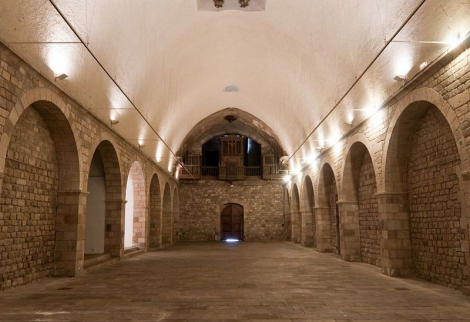 La Capella © Arxiu La Capella / Pep
La Capella © Arxiu La Capella / PepThe opening of the Barcelona kunsthalle in the old factory in the Sant Andreu neighbourhood reinstated the purpose that Santa Mònica had fulfilled since the 1980s. And in a new framework: forging connections with social, educational and cultural entities and the factory for creation also housed in this heritage complex that will soon begin the final stages of its transformation. Rather than generations or ages, Hurtado prefers to talk about trajectories and visibility. “We have a responsibility to explain who these names are who already have a career and have not yet received public recognition, whether artists or curators, mid-career or not,” she points out.
The sector has never tired of demanding the reinstatement of Santa Mònica, which in recent years has been a hotchpotch of cultural proposals with no directive. Finally, in early 2021, Enric Puig Punyet (Mataró, 1980) was appointed, also through a public tender, to lead the art centre’s new stage. Puig Punyet, who comes from the factory for creation La Escocesa, is testing an innovative and experimental institution model, with virtually no equivalent anywhere, which makes it more difficult to define. Santa Mònica, which was inaugurated for La Mercè [the city of Barcelona’s annual festival], aspires to be a platform to promote mid-career artists with an approach that focuses on open and unpredictable creative processes. “Our commitment is to community work and mutual learning, connecting different disciplines, sectors, not just related to art, territories and generations. Artists should not only be given one more exhibition for their curriculum, but subsequent channels to grow professionally”, explains Puig Punyet, who works with a flexible programming concept. “We have to look outwards and also let ourselves be looked at, in order to have a capacity to respond to reality.”
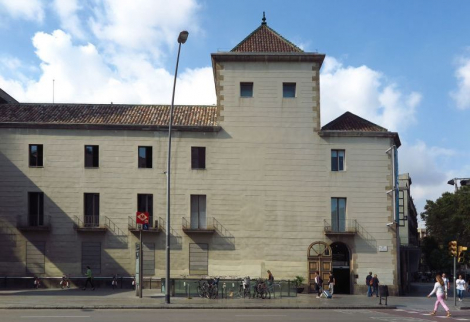 Centre d’Art Santa Mònica © Vicente Zambrano González
Centre d’Art Santa Mònica © Vicente Zambrano GonzálezThe local scene, at the forefront
The rich community of Barcelonan and Catalan artists is the big capital of these spaces, which have ripped up old labels of prejudice towards the local. “Listening and dialogue with our entourage are essential for dealing with the emergencies we are up against, now exacerbated by the pandemic. I don’t agree that working with a local programme is provincialism. Santa Mònica shall place the emphasis here, and that doesn’t mean closing itself off at all”, Enric Puig Punyet believes.
At La Capella, the dilemma doesn’t exist either. Its purpose is to assist its own artistic fabric, specifically emerging artists. David Armengol (Barcelona, 1974) has recently taken over from Oriol Gual and is loyal to the programme that forms the backbone of all its contents: the Barcelona Producció call for tenders, which, since its creation in 2006, has been changing to adapt to the needs and desires of artists and other art agents. One of its distinguishing features is the support lent to creators at the outset of their careers before, during and after the inauguration of their artwork, selected by a jury that tutors them. “We place care at the heart of everything. The challenge now is to broaden the initiative”, Armengol points out, who in the management competition presented a plan to give La Capella the status of a fully-fledged art centre, with new parallel programmes that shall progressively be generated and grow “organically”.
Fabra i Coats: Centre d’Art Contemporani de Barcelona seeks balance, which is why it shares some of the game cards with international proposals. “This dual perspective is important because it feeds back into itself,” underlines Joana Hurtado. And La Virreina Centre de la Imatge, run by Valentín Roma (Ripollet, 1970), has also found a coherent fit with the city that makes it one of the benchmark artistic facilities in Barcelona. In 2020, the colonial building on La Rambla celebrated 40 years of commitment to disseminating art. It is the leading public institution. At the end of the first decade of the new millennium, it adopted the name of Centre de la Imatge. Roma landed there four years ago with his project, chosen by public tender, and in 2021 began a second term, after winning another competition. Research runs through the heart of the programme, which addresses the subject of image in an amplified scope. Photography has a consistent presence, but it intertwines with lots of other media. As for the authors, the venue features historical figures or movements with no museographic narrative or relationship with the present to current artists who are often also discoveries. In this second phase, he wants to interact more with the local context and at the same time push international exhibitions up a notch. “They are not conflicting actions.”
Interconnecting
The next step is greater coordination between the centres at different levels, local and national. “We need to move from a more individual model to a network that shows that we are a combination of interdependent voices,” as David Armengol sees it. “Conversations must be constant as to the role of each institution in relation to the others,” claims Puig Punyet. Hurtado asserts that, “We must be able to ensure the stability and visibility of a solid institution, far from political clashes, while still being porous; that is to say, on the one hand, spokespeople, in the sense of opening channels of communication, and, on the other, mediators, integrated in a network who help build bridges between emerging and established artists.”
Roma also sees a clear prospect for cooperation. “Obviously we all have our own distinctive features, but it is more what unites us. We’re wrong if we see ourselves as part of a pie, because it doesn’t exist. Barcelona is a small city and the audiences and realms of art are associated.” For the director of La Virreina, the vision of the art scene in the 1990s marked by hierarchies between the facilities, classified by size and theme, is out-dated. “Now is the time for small and medium-sized venues. We are not governed by labels, what drives us is doing projects well”.
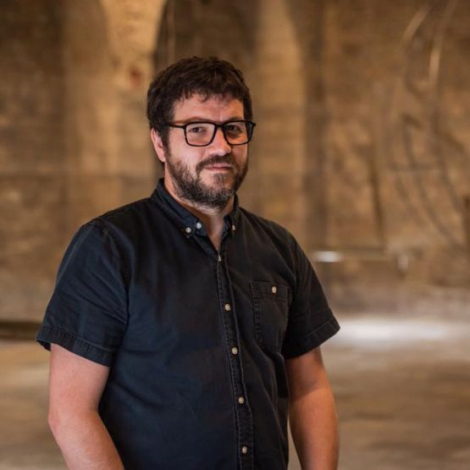 David Armengol, director of La Capella. © Pep Herrero
David Armengol, director of La Capella. © Pep Herrero“We need to move from a more individual model to a network that shows that we are a combination of interdependent voices.” David Armengol, director of La Capella
Internationalisation: an expensive desire
The aspiration to widen the international scope of the contents of Barcelona’s art centres is palpable, but everyone agrees on the major difficulties it poses, especially at the outset. “For a sense of visibility, but also of sustainability, we should co-produce at least half of the exhibitions we do. But administrative and legal barriers are a stumbling block, and our human and economic resources are very limited. Through mediation processes we are beginning to understand that an exhibition does not end when it begins (with the inauguration), but can be activated and deactivated while it lasts; now we need to understand that it does not end when it is over, that there is life, worlds and audiences beyond what is made in Barcelona. The porosity is this: working hand in hand from the beginning,” Joana Hurtado points out.
“The priority now is to create a solid model here. We need time so that it is also interesting abroad,” says Puig Punyet. At La Capella they want to start with small actions: “Moving people is easier than moving exhibitions, although we are not giving up on that. Bringing artists from our scene into contact with related centres abroad can generate stimulating exchange experiences.” La Virreina has managed to enter this circuit, dealing with renowned museums one-on-one: in recent seasons two or three of the dozen exhibitions on its programme have travelled around Spain and beyond.
 Enric Puig Punyet, director of the Santa Mònica art centre. © Jaume Sánchez
Enric Puig Punyet, director of the Santa Mònica art centre. © Jaume Sánchez“I don’t agree that working with a local programme is provincialism. Santa Mònica shall place the emphasis here, and that doesn’t mean closing itself off at all.” Enric Puig Punyet, director of the Santa Mònica art centre
Messages and audiences
Disruptive and subversive art occupies a prominent place in institutions’ programmes, which in turn fight so that their venues do not override their messages in a simple showcase for uncritical spectators. “Exhibitions are never neutral. Some adjust and others invigorate,” says Valentín Roma, convinced of the role they must play as “spaces of dissent”. At the same time, he eschews the mantra of contemporary art as an inaccessible language. “We should not dismiss audiences’ intelligence so flippantly. The analyses of audience studies present many surprises.” Nor, he adds, should we fall into the cliché that young people have other cultural preferences. “This absenteeism is a false myth. It is not true that young people only go to blockbusters. The majority age group at La Virreina is between 18 and 24 years old. Highly educated, cultured and sophisticated.”
“La Capella has gained the loyalty of the art public, and now we must undertake specific actions to attract other audiences. It’s not about making contemporary art easy, it’s about challenging citizens with mediation strategies, something we hadn’t done until now and have just started to do,” Armengol declares.
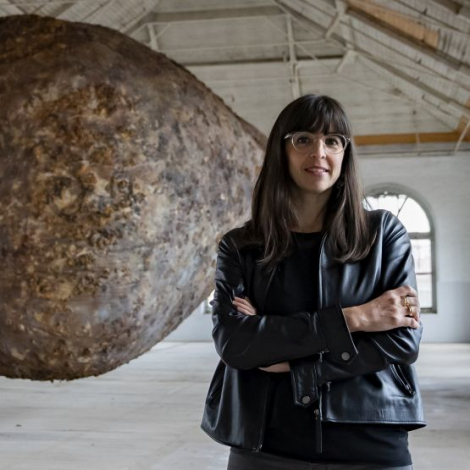 Joana Hurtado, director of Fabra i Coats: Centre d’Art Contemporani de Barcelona. © Àlex Losada
Joana Hurtado, director of Fabra i Coats: Centre d’Art Contemporani de Barcelona. © Àlex Losada“Exhibitions must be tools for sharing knowledge. We have to make them more flexible and rid them of rigidity”. Joana Hurtado, director of Fabra i Coats: Centre d’Art Contemporani de Barcelona
Joana Hurtado is clear that she wants to change and open up the relationship between artists and the public. “Exhibitions must be tools for sharing knowledge. We have to make them more flexible and rid them of rigidity. We need to advocate for more contaminating mechanisms, so that citizens feel more challenged and can get involved, or so the artist can disappear and be the audience too. This level of experimentation is a risk and at the same time a commitment that the institution must make to undo the path of so many years telling us that the artist is a genius and that in the room we must be quiet and not touch anything,” argues the director of Fabra i Coats: Centre d’Art Contemporani de Barcelona.
For Enric Puig Punyet, institutions are very much to blame for the misgivings a large swathe of society feels about contemporary art. The abuse of discourses has distanced them from its most fundamental meaning. “There are several ways to get into contemporary art, and not all of them include rationalisation. Turning it back into an experience is imperative. We have to make the audience shed the feeling that they will not understand it or that they are not sufficiently prepared,” adds the director of Santa Mònica, who has given new instructions to the gallery attendants: ”They don’t have to watch over anything. Their role is to give this message to visitors: let yourself be captivated, explore the corners of the space, feel at home.”
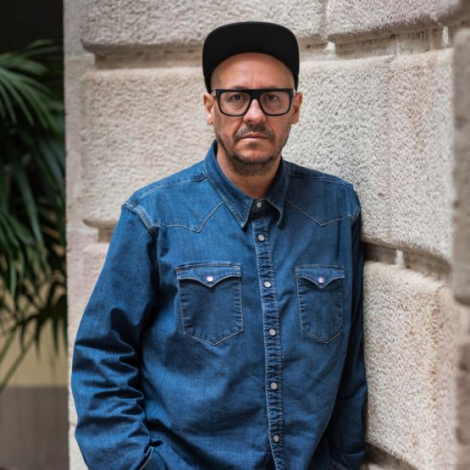 Valentín Roma, director of La Virreina Centre de la Imatge. © Pep Herrero
Valentín Roma, director of La Virreina Centre de la Imatge. © Pep Herrero“Now is the time for small and medium-sized venues. We are not governed by labels, what drives us is doing projects well.” Valentín Roma, director of La Virreina Image Centre
Lots to do
A new scenario has opened up, yes, but it has only just opened up. David Armengol expresses a shared feeling: “The moment is inspiring and exhilarating, and we must grab it. We need stability and continuity.” “We are weaving a fabric and the results won’t be seen immediately. They have to let us work. Institutions are not just exhibitions; lots of different people are using them. This is the most beautiful image we have to retain,” Valentín Roma drives home. For Enric Puig Punyet, it is essential we do not fall back into the trap of quantifying audiences that prevailed for so long and that led the historic Santa Mònica initiative (among others) to demise. “Currently there is a very different perception, and that’s good.” “Art is seen as an end, not a means. A book, on the other hand, is not. The library system has received public support that has proven decisive for its success. We need cultural policies that believe in contemporary art and do not fall into the elitist idea of art, because it isn’t,” concludes Joana Hurtado.
The newsletter
Subscribe to our newsletter to keep up to date with Barcelona Metròpolis' new developments



